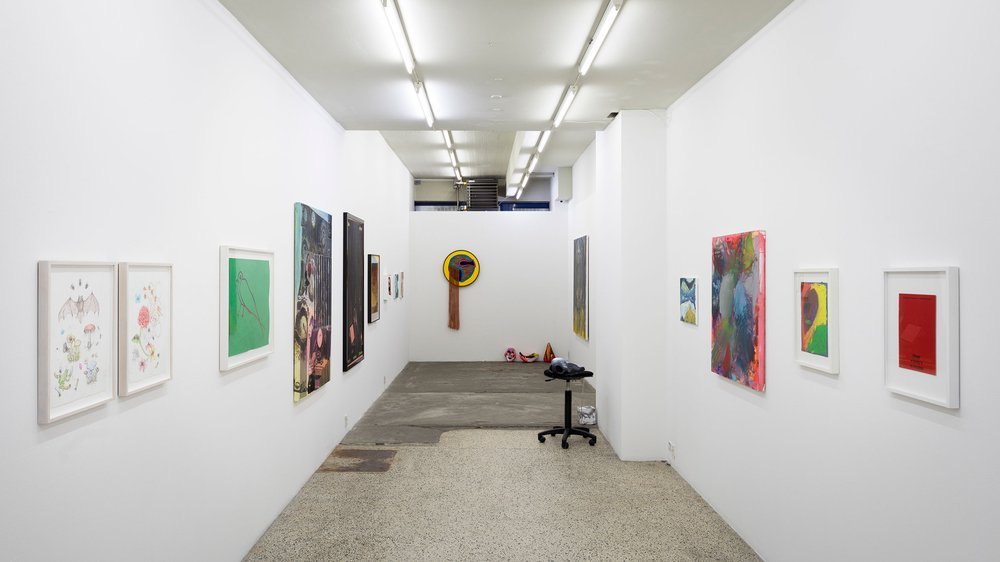Lolita Pelegrime Solo Exhibition
*Archive Article: Originally published in the digital magazine Blacklisted Copenhagen on October 7, 2018
The first solo exhibition in a gallery space is a big deal for an artist. There are feelings of anticipation, terror, stress, and joy at finally having your work recognized as worthy of a gallery space. As an artist’s career progresses, and the production of an exhibition becomes routine, many long to return to that visceral emotion that came with the first gallery exhibition.
There is the anxiety of trying to get all the pieces together just days, hours, or minutes before an opening. There is the intense dopamine rush that floods your body during the opening as all eyes are on you and your work – the bell of the ball. Then there is the dread of a bad review in the days to follow.
The debut solo exhibition is something that only a select few among us ever get to experience – artist or not. This is why it was a pleasure to be invited to speak with Lithuanian artist Lolita Pelegrimeas she gears up to show her work for the first time in Copenhagen’s Vess Gallery.
Now I must note here, that Lolita is not a painter who is fresh-out-of-tube – so to speak. I don’t want to imply that she is inexperienced. Before relocating to Copenhagen from her homeland of Lithuania she attended the Royal Art Academy of Vilnius– where she developed her style and mastery of oil painting techniques used during the Baroque, Post-impressionist, and Vienna Secession periods.
There is still a perceived innocence to Pelegrime’s work that only comes in the fledgling years of artist development. One more focused on developing a recognizable style, rather than underlying concepts. There is a timelessness to her paintings – a mash-up of eras and techniques – which hints at a farseeing potential for evolution, growth, and discovery. The path that will continue to allow her to develop her painting style, whilst also veering off into something completely new.
INTERVIEW
Looking through your oeuvre of work, I see hints of technique and style similar to the 20th-century painters Egon Schiele and Gustav Klimt. But rather than project my own interpretations of your work, can you tell me about some of the influences of your work?
Surely traces of talented artists such as Egon Schiele and Gustav Klimt can be found in my work. Though the equally heavy traces that my inspiration is pulling from can be found from much earlier centuries such as the 16th. But the harbor where my heart frequently seeks shelter, is, true enough, where the 19th and 20th-century art peeks; post-impressionism is a period I am immensely drawn to.
Artists such as Paul Gauguin, especially. The work he produced during his time in Tahiti and the Marquesas Islands, is simply beautiful. Post-Impressionism really moved me. Gauguin’s good friend, Alphonse Mucha is also a great source of inspiration for me, as well as the breathtaking work of Frida Kahlo, who, all honestly, is the divinity of all my creative sources.
To be frank, the list of artists whom I draw inspiration from is quite long. For me, the work of an artist has to push my emotional chords, in order to draw inspiration. It’s something that is hard to explain, really. But among these artists include designers, photographers, and painters who are still living and thriving in their work.
Like the works of many of these classical painters you draw inspiration from, portraiture is a central component. Tell me about the subjects that you work with. Are they fictive, or based on actual people?
I’m certainly driven by the genre of portraiture. The faces that appear are pulled from a wide archive that includes old photographs of mine from Lithuania, people I have met or secretly sketched in smokey bars, seen on the streets, conversations with strangers or loved ones have, in general, also been fuel for lining out new paintings as well. And, obviously, I inject these characters’ faces with a somewhat 16th-century brushstroke. So it’s really a mixture of many clothes, kind of like a DJ remixing a classic old-school melody with a contemporary voice or vice-versa.
When starting something new, I always begin with the face – the eyes, to be exact. It is from this point, that everything else comes to life for me; the story, characteristics, colors, and mood. It’s where I lose myself to what comes to me.
The famous quote by philosopher Marcus Tullius Cicero “The face is a picture of the mind as the eyes are its interpreter” comes to mind and perfectly fits my obsession with painting faces.
As a Lithuanian artist, who has now relocated herself to Copenhagen, how has that transition been and how has that affected your work?
The relocation between countries and Copenhagen as a final destination has surely affected how I approach my work and processes. Copenhagen has given me the freedom to seek and grow in the direction I’ve always wanted to, as well as giving me space to explore. Other destinations have given me my vibrant never-ending color palette. But I absolutely have fallen in love with this city; the historical contrasts within, the hidden gems like the unspoiled smokey bars, cultures, and people from all walks of life that intertwine. Also, I find it attractive that the city is not of a size that can get you lost in, mentally or physically. And I suppose all of this is why I feel at home, and can focus on moving forward with my paintings.
I noticed that you primarily work with oil – also a more classic medium, and one that requires a bit of skill to master. What about oil makes it a medium that you return to?
Using oil has always, from the beginning, been a medium that I cannot escape or leave alone. It’s genuinely the butter of my heart. I love everything about it; the smell, the texture and how it lays on the canvas, the glossiness and how the tools I use to apply it are bound to be smeared in the creation process. I love observing my hands, face, hair, and clothes when in the midst of creating, as the mess is merely a witness of me being alive.
It’s equal to the most intense and passionate first-love; a love that has never left me and something I will always treasure and protect. The medium has always been present and has helped me unfold and interpret the flood of thoughts and ideas that are always rushing through me.
For your upcoming solo exhibition here in Copenhagen, how did you curate the works that you will be exhibiting? Is there a red thread that ties them all together?
Yes, this is truly my very first debut solo exhibition, which I am incredibly excited about. It’s all pulled together by the amazing curators of Slowroom Contemporary, Pete and Casper, who approached me last Spring about the idea of a solo exhibition – to which I immediately said a big fat “YES” to. I had previously worked with the guys from Slowroom Contemporary in an extension of a few group exhibitions, and the collaboration was quite wonderful. These guys have a very clear aesthetic profile, vision, and professionalism on the projects they take on, so I trusted them entirely on the curatorial part.
The red thread of the exhibition and what pulls it together is found in the characters and stories of the curated paintings. I could say that the thread is far more conversational and emotional as a starting point than conceptually based. And this idea is what attracted me to the curatorial suggestion they came up with.










